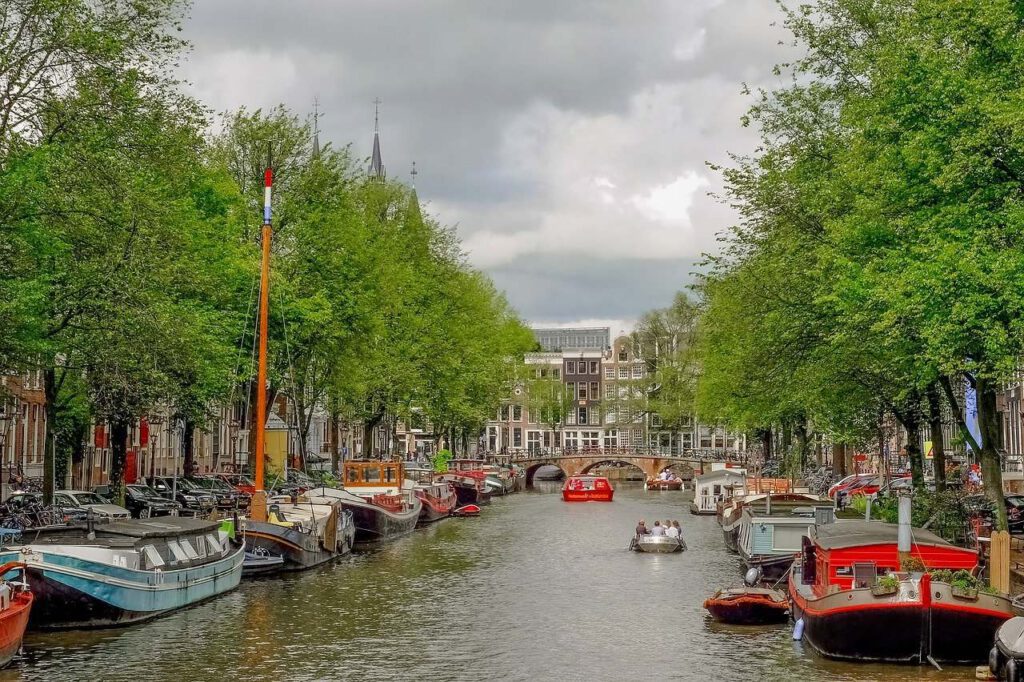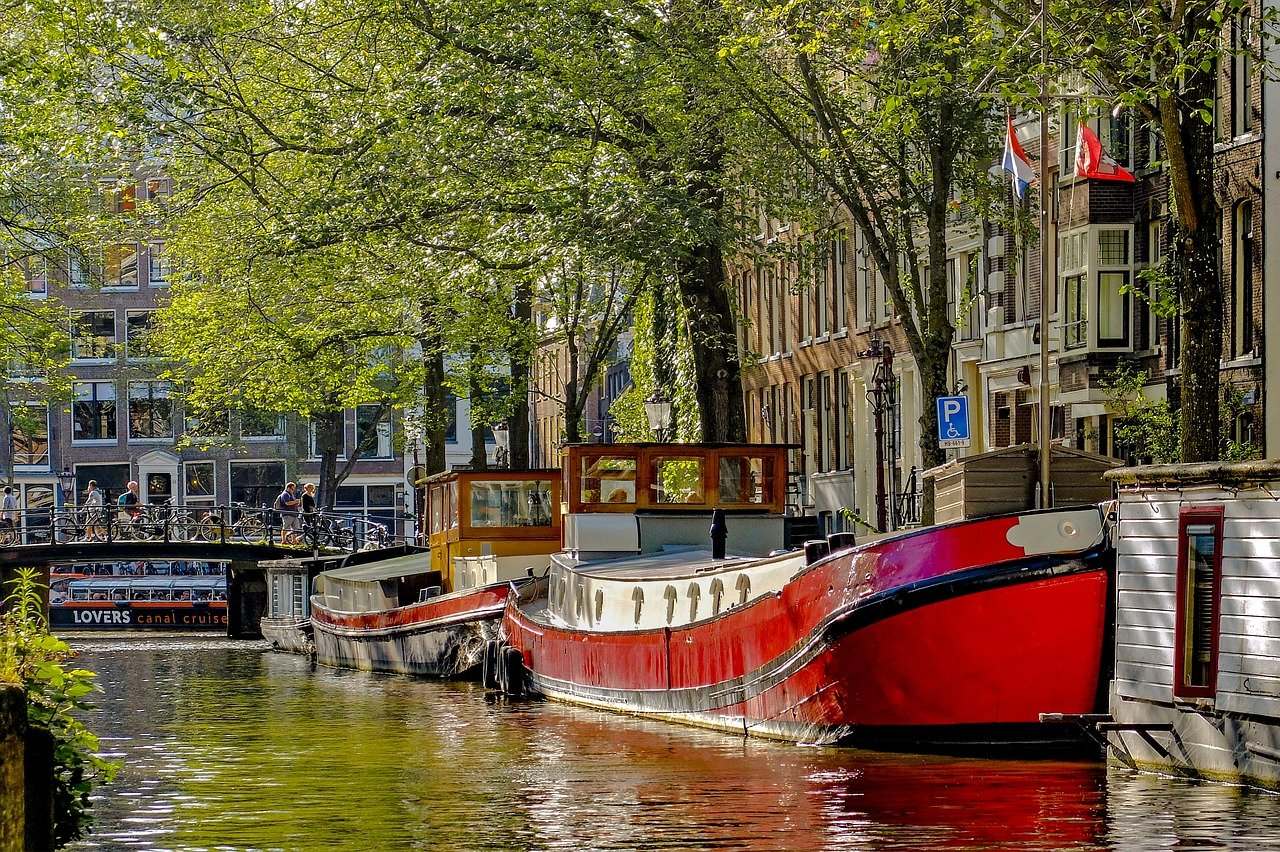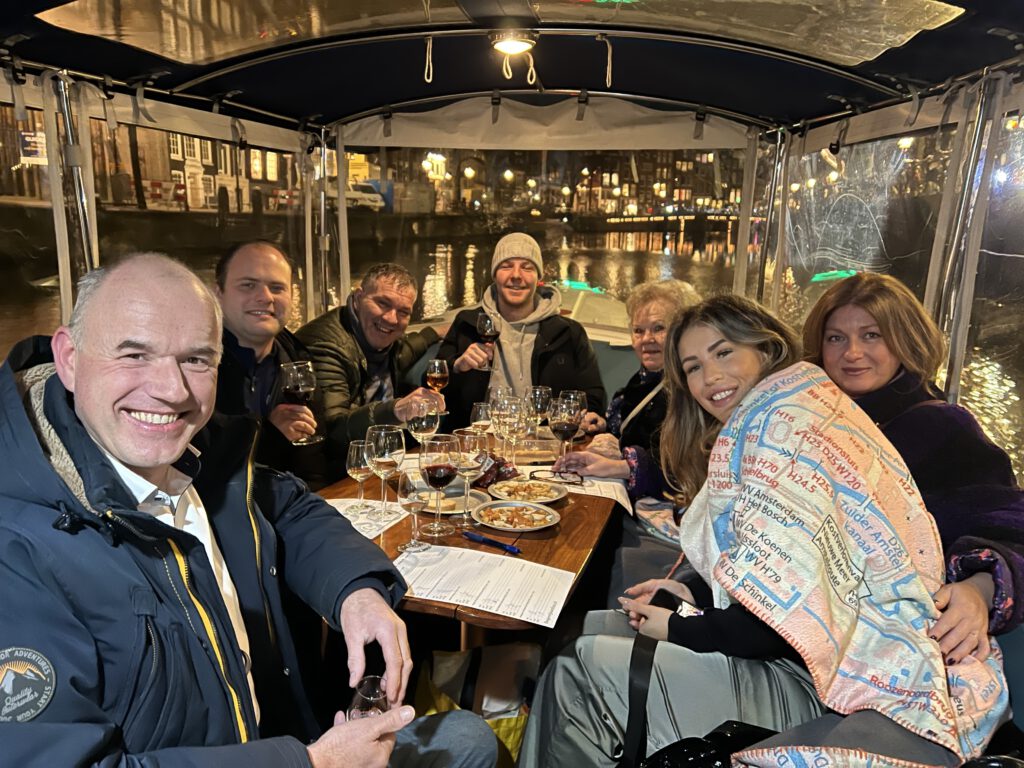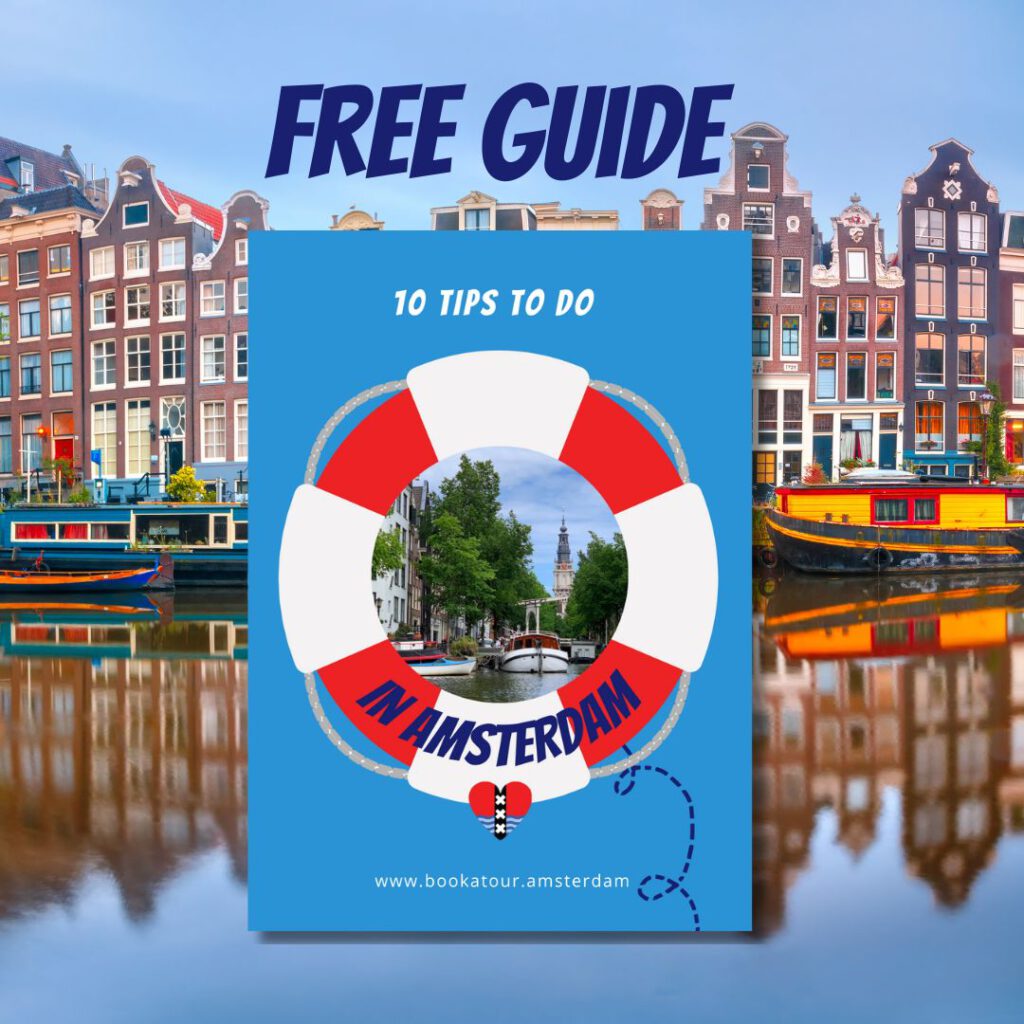In Amsterdam, you can’t miss the houseboats. They’re everywhere; including nearly every picturesque photo you’ll ever take in Amsterdam! Picture of sunset over a canal? Houseboat. Selfie on the skinny bridge? Houseboat. Anna Frank museum? Houseboat.
Yes, that’s right. Her book is set on one! Bet you didn’t know that! Okay, largely because it isn’t true. But that you even entertained the thought shows how ubiquitous the houseboats here are.
But having them block your view of one of the many water-based festivals is entirely different from actually living on one. So, what’s that like?

They’re quite spacious
They look a little cramped from the outside. But you’d be surprised how much space there is on board. That’s because many houseboats continue under the waterline; giving you more space than you might expect. No, you’re not going to be able to house three generations of a family inside, but many have enough space for the nuclear family. More than most apartments here offer, that’s for sure.
Some even have two floors. Though that’s not really all that common in the center as there the government has ruled houseboats shouldn’t block the view.
What is allowed is for people with houseboats to use their houseboats as docks. And that’s awesome, as what’s cooler than being able to step out of your living room window right onto your boat? It’s where we’ve got our own boats and it means that we often float into town instead of getting on a bicycle or a car. It might not be as fast, but it means every journey is a pleasure cruise!
But they’re not as free as you’d think
When people first hear of houseboats, they often think that people who live on them are moving around from street to street and even city to city. Just turn on the engine and float on down to another part of town! Who needs a car when you can take your whole house over to your auntie for a coffee?
Unfortunately, that’s no longer how it works. Though the boats are physically free, the government has done its best to tie them down with rules and regulations. Now, each boat has a designated space and the government isn’t adding any more. In fact, they’re looking to reduce them.
That means that to move a houseboat you need:
- A free berth which you can only really get by getting somebody else’s spot.
- The right paperwork sorted out and the right government departments informed.
- Power, water, gas and sewer contracts for the new location.
- As most houseboats aren’t so much boats as rafts and don’t have motors, somebody to push or drag you to your new location.
- Either a route with high enough bridges that your houseboat fits under them or a way to lower your boat.
In other words, you’re not going to your auntie for coffee. Not with your whole house anyway. Better to grab a skiff or bike. Or just invite her around to your place. As you’ve actually got an address, she’ll at least know where to go.
Power, water, gas and sewer lines
And at least we get to be plugged into the grid! This means we have power, water and gas. We’ve even got internet! Isn’t that very 21st century?
Another advantage is that we can get rid of our waste. To be clear, we always could. But for the longest time that meant that after we ‘used the facilities’ tourists could see the results bobbing down the canal.
Not exactly a pleasant thought – or sight. And so, the government passed a law stating that no raw sewage could be dumped int the canal. When did that happen? All the way back in… 2005. To make matters worse, initially house boats were exempt! Fortunately, the project is close to being finished now. So yes, now the color of the water is brown for other reasons.
In some ways they’re very private. In others they’re not at all.
As you may noticed, in Amsterdam you don’t have a lot of privacy if you’re living on the ground floor. That’s because we don’t use curtains as much – something that has to do with our protestant roots where if you had your curtains closed you obviously had something to hide.
Now, that problem can be even worse on the water. I mean, imagine if you live on one of the main tour boat routes? You’d have a mass of people gawking in your window every ten minutes or so. Some houseboat dwellers do get a bit frustrated by that.
On the other hand, you don’t have any neighbors. Nobody stomping around upstairs at three o’clock in the morning on a Tuesday and nobody to complain when it’s you doing the stomping. In many ways, it feels like you’re living on your own little island even while you’re situated in the middle of the city. And that’s awesome.
Think a houseboat is cheaper than an apartment? Think again
Originally, houseboats were a way to deal with the housing shortage after World War II. If you’d moved onto one back then, you’d be golden (and also quite old). That’s because since then they’ve moved from an emergency housing solution to very desirable places to live.
I mean, it really does feel like you’re on a different world! The lap of the water. The boats full of happy sailors floating by. The ducks and swans begging for breakfast scraps.
But as a result of the desirability and the way the government isn’t allowing anymore houseboats to be put out means that the spaces there are, are quite dear.
Add to that that boats require a lot of maintenance and it’s not exactly a financial picnic.
So, is it worth it?
Without a doubt! Living on a houseboat has its drawbacks, but there is no other way we could imagine living. There is this sense of peace that you get on the water you’ll never get in the city. It’s as if that gangplank leads to another world. One that you share with other houseboat dwellers, boat captains and water fowl.
And that makes all the problems – like the way the water the canals leech away heat and peel away paint – worth it. The good news? You can actually rent houseboats to try out for a while. There are places all over Amsterdam that rent them out. And they’re in plenty of other cities too.
Then you can try the magic of this style of living for yourself! If you love the water or even like it just a little bit, we’re convinced you won’t regret it.



